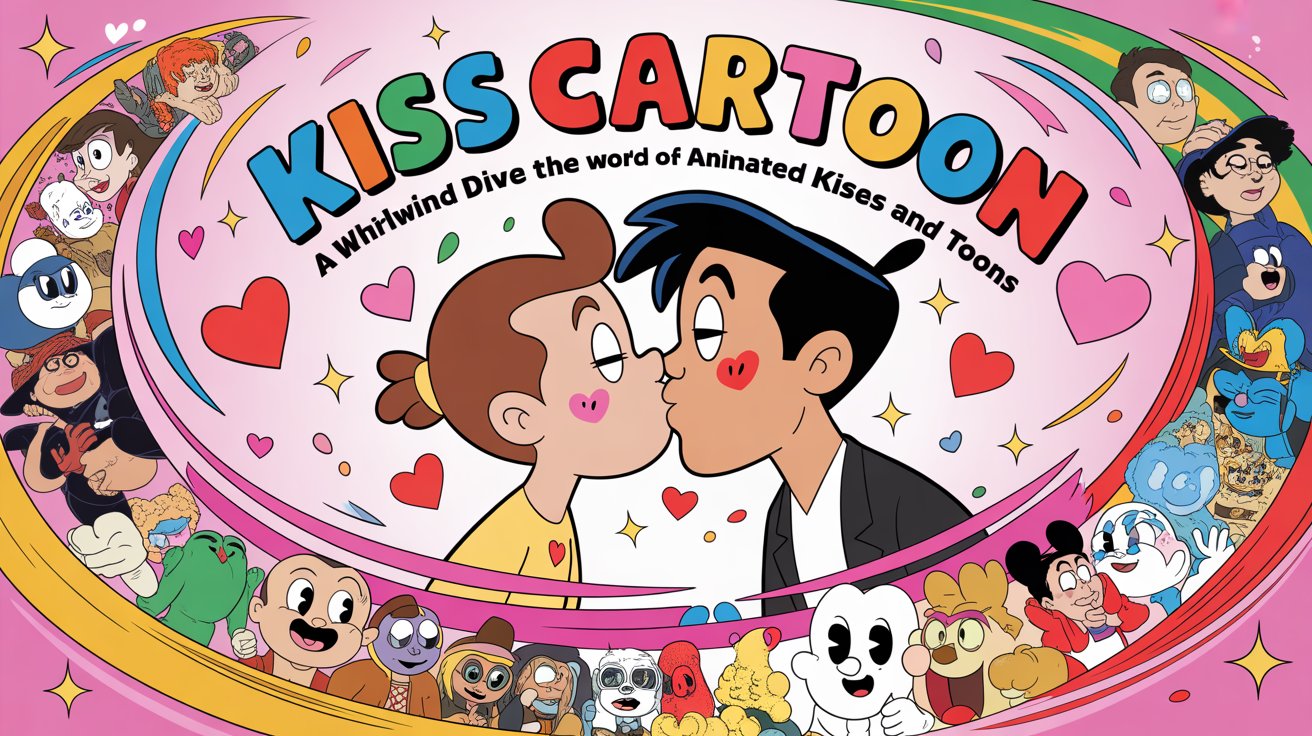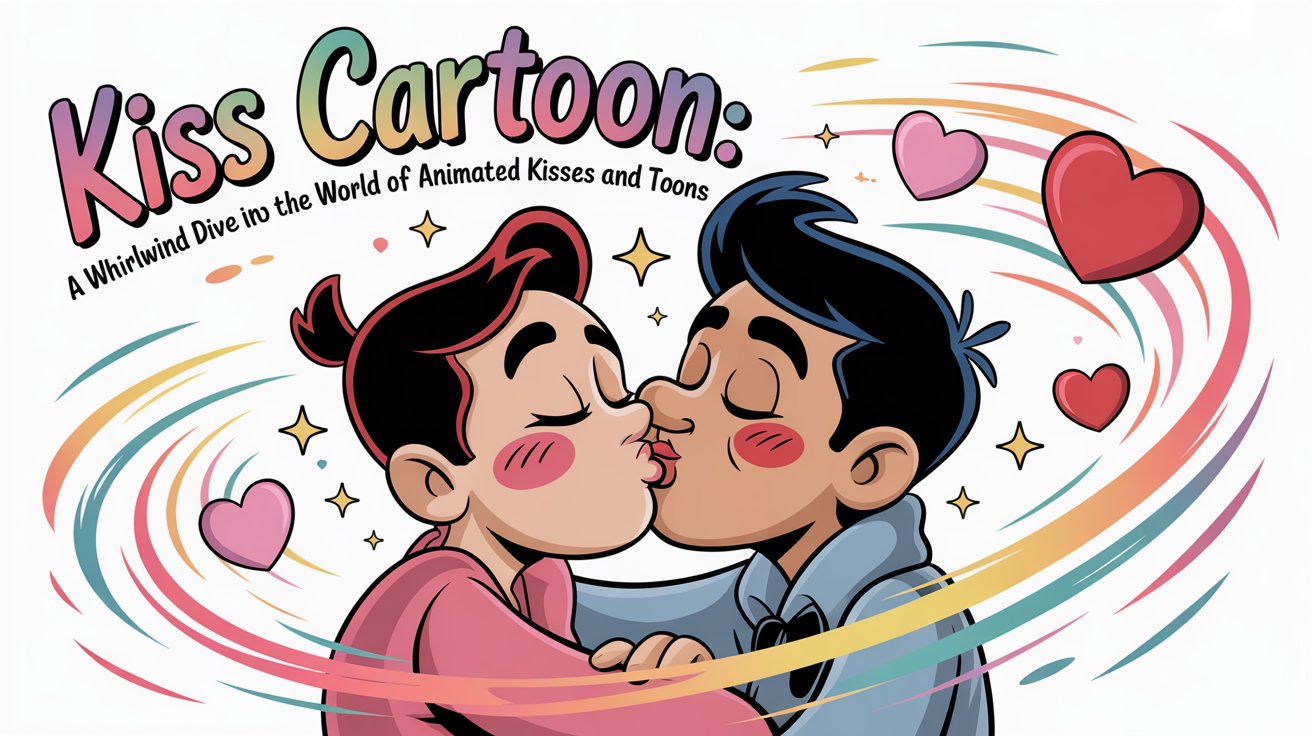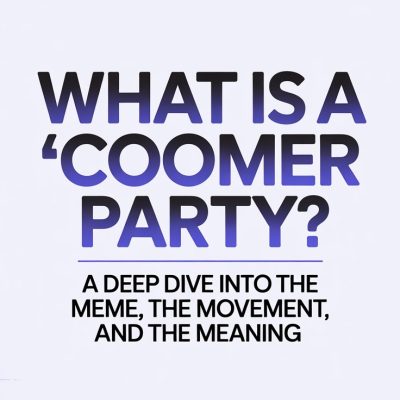Introduction
Have you ever paused a scene in your favourite cartoon just as two characters were about to share a kiss? That moment where everything slows down, the heart skips a beat, and you realise a kiss in a cartoon can mean so much more than just lips meeting. In this article we’ll journey through the lively terrain of “kiss cartoon” — what it can mean, why it matters, how it shows up in animation, and how streaming culture affects it. Think of it as a colourful comic strip where each panel tells a different story. Ready? Let’s press play.
What is a “kiss cartoon”?
When we say “kiss cartoon,” we’re referring not just to any cartoon with a lip-touching scene, but to those moments in animation that a) highlight the act of kissing, b) use it for emotional or narrative impact, and/or c) centre around characters whose relationships lead to a kiss. It’s an umbrella term: it can span from light cheek-pecks in Saturday morning toons to deeper relationship moments in animated movies or series.
Imagine a kiss in a cartoon as a bookmark in a story – it signals a turning point, a crescendo, a shift in tone. In simpler words: it’s more than just a physical action; it’s an emotional beat.
Why the animated kiss matters
Why should a simple kiss in a cartoon matter? Because animation allows us to exaggerate, stylise and dramatise the moment in ways live-action rarely does. The timing, the frame, the character reaction — everything can be dialled up. The result? The moment stays with you.
Animated kisses can serve multiple functions: they can show character growth, deepen relationships, signal a coming-of-age moment, or even play for comedic value. They become a shorthand: you don’t need long dialogue, just the faces, a pause, maybe a soft musical chord—and bam you feel something.
For example, think of a shy character finally getting the courage to kiss another; in cartoon form the lighting might change, the background might fade—an analogue to how a memory feels in your mind. That’s the power.
Classic toons and the kiss moment

Let’s roll back to the era of cell-drawn frames and Saturday mornings. In older cartoons, kisses were often simpler—maybe a peck on the cheek, a hero rescuing the heroine with a quick smooch—or sometimes implied via tropes rather than fully shown.
Despite the simplicity, these moments left an impression. Why? Because they were rare, and thus significant. In a world of slapstick, heroics and chase sequences, a kiss stood out.
The charm often was in the subtlety. A character might blush or look away. The kiss might be off-screen. These little touches made the moment memorable—even if the animation style was humble.
Modern cartoons & evolving portrayals
Fast-forward to today’s animation landscape and the kiss has evolved. We see deeper emotional arcs, more diverse relationships, and some quite bold representations. For instance, shows now might explore same-sex kisses, or kisses laden with more meaning than the classic boy-meets-girl trope.
The context matters more now: who’s kissing whom, why, and what the consequence is. The animation style also plays a part—shadows, lighting, camera angle (yes, cartoons have “camera angles”), all enhance the moment. The kiss becomes a set piece rather than just a gesture.
Animation also allows the fantastical—characters might be aliens, robots, anthropomorphic animals—yet the kiss can ground the story in a human (or near-human) emotional truth. So even in weird worlds the kiss can feel real.
Streaming culture and accessibility
With the rise of streaming platforms and toggling through episodes with a click, the kiss in a cartoon gets new meaning. Viewers binge-watch, pause, rewind. A kiss can become a viral clip, a GIF, a meme.
But there are also issues. Accessibility means more exposure, which is good for diversity but also raises questions about appropriateness, age ratings, and viewing contexts. There’s also the phenomenon of free streaming sites, unlicensed platforms, where content is uploaded without proper rights—this changes distribution, but not always legally or safely. For example, some sites offering free cartoons may pose security or legal risks.
Thus streaming culture both amplifies and complicates how we experience the animated kiss.
Legal, ethical and safety concerns
Every kiss in a cartoon touches on broader issues: copyright, distribution rights, age-appropriateness, depiction of relationships. On the legal front, free streaming sites have been flagged for hosting content without proper permissions. For example, sites like those offering unlicensed cartoons present risks of malware and legal exposure.
Ethically, depicting a kiss in a cartoon aimed at children raises questions: Is the age-rating correct? Is the relationship portrayal responsible? Are the characters portrayed respectfully? As viewers (or parents), we need to be aware.
Safety wise: Unofficial platforms may be unsafe. One article warns: “No, it is not safe to stream on [an unlicensed site] due to pirated content, pop-ups, and malware risks.” So even the venue where you watch matters.
Global perspectives: culture and kisses in animation

Different societies have varying thresholds for what a kiss in animation can mean. In some countries, a simple cheek kiss is totally acceptable for children’s programming; in others, any kiss more than that may be censored or omitted. Cultural norms shape how animated kisses are framed.
For example: in one region a romantic kiss between characters may be seen as harmless, whereas in another it may trigger stricter content ratings. That’s part of why you’ll see different versions of cartoons across geographies.
In global streaming, this matters: what’s acceptable in one locale may cause localisation edits in another. So when you watch a “kiss cartoon” from another culture, you might wonder: was this scene always here, or was it modified? It reflects not just animation but society.
Production side: how the kiss gets animated
From the animator’s standpoint, a kiss scene is more than placing two lips together. It involves timing, expressions, background, sound, camera movement. Let’s break it down:
-
Expression & timing: The characters’ eyes, posture, hesitation—these convey meaning.
-
Background & lighting: A typical kiss scene might cut out clutter, go to a soft-lit background, perhaps stars or slow motion.
-
Sound & music: A moment of silence followed by a chord, or soft music underneath.
-
Camera/angle: In many cartoons the angle shifts to highlight the moment.
-
Animation detail: The actual movement—leaning in, closing eyes, the faint blush. The animator must make it feel genuine and not stiff.
In essence, animating a kiss is like choreographing a dance: you want smooth moves, emotional lift, timing, and the right surroundings. It’s the metaphor: the kiss is a dance of story.
Fan culture, memes and the kiss scene
In today’s social media era, a kiss in a cartoon can become a meme, a fan-clip, or a trending highlight. Viewers screenshot moments, share favourite couple scenes, debate “who kissed who first,” make art, GIFs, remixes.
Fan culture shows us just how much viewers invest in relationships in cartoons. The kiss scene becomes their moment—discussed in forums, fan-fiction, and fan-art. It becomes more than just a scene; it becomes community memory.
For example, someone might freeze-frame the first kiss in a show and post: “Remember when they finally DID it?” The kiss becomes iconic. It’s the bookmark in a collective story.
What the future looks like for kisses in cartoons
Looking ahead, I see several trends:
-
More inclusive representations: We’ll likely see kisses across more relationship types (including LGBTQ+, multi-cultural pairings) being normalised.
-
Virtual reality / immersive animation: As tech advances, the viewer might feel more immersed in the moment—imagine an animated kiss scene you “are” in.
-
Higher emotional stakes and subtlety: Animators may focus less on “first kisses” and more on what the kiss means—the back-story, the consequences.
-
Global feedback loops: With audiences around the world, what works in one culture may influence portrayals in another.
-
Ethical and rating evolution: As audiences age, and streaming enables targeted content, the treatment of kissing scenes will be more nuanced and age-aware.
In short: the kiss in animation is not going away—if anything it’s gaining more depth and more meaning.
Tips for parents and viewers on interpreting animated kisses

If you’re watching cartoons with children, or just curious as a viewer, here are a few friendly pointers:
-
Check the rating and context: Not all kisses are equal; some are innocent, others part of deeper romantic arcs.
-
Talk about the moment: If a child watches a kiss scene, use it as a chance to ask how characters feel, what they might do next.
-
Notice the build-up: Often the kiss comes after challenges or character growth. That’s storytelling at work—point it out.
-
Streaming safe spaces: Choose licensed platforms when you can; avoid free unverified sites that might be unsafe.
-
Global sensitivity: Recognise that what you see may differ across regions—no judgement, just understanding.
Common misconceptions about “kiss cartoons”
Let’s clear up a few myths:
-
Myth: A kiss in a cartoon always means romance. Not always. Sometimes it’s comedic, symbolic, or even a friendly gesture.
-
Myth: Kissing scenes are only for older audiences. Many cartoons include mild kisses in child-friendly contexts. The key is how they’re framed.
-
Myth: Free streaming sites are legal and safe. No—many free sites host unlicensed content and carry risks.
-
Myth: Animated kisses are less meaningful than live-action. Actually, animation can amplify emotional beats through style, exaggeration, and creative framing.
-
Myth: All cultures show kisses the same way in cartoons. Far from it—cultural norms vary, and animation reflects that diversity.
FAQs
Q1: What ages are kiss scenes in cartoons appropriate for?
A1: It depends on how the scene is framed. If it’s a gentle peck in a friendly context, younger viewers may be fine. If it’s part of a mature relationship arc, it may be more suitable for older kids or teens. Always check the show’s rating.
Q2: Are kisses in animated shows always romantic?
A2: No. They can be platonic, comedic, dramatic, symbolic or romantic. Context is key.
Q3: Is it safe to watch cartoons on free streaming websites showing kiss scenes?
A3: You should be very cautious. Many free sites may host unlicensed content and carry malware or legal risks. It’s safer to use official streaming platforms.
Q4: How do cultural differences affect how kisses are shown in cartoons?
A4: Cultural norms determine appropriateness, style and frequency of kisses in cartoons. Some countries may tone down kissing or frame relationships differently; others may be more open.
Q5: Why do so many fans remember the first kiss scene in a cartoon so vividly?
A5: Because a first kiss usually signifies a change—character growth, relationship shift, story climax. It echoes in memory like a chapter break in your favourite book.
Conclusion
In the playful world of animation, a kiss isn’t just a quick moment—it’s a story pivot, an emotional rush, a shared experience. Whether you’re watching classic cartoons with a friendly peck, enjoying modern shows with layered romances, or scrolling fan-clips of a beloved scene, the “kiss cartoon” motif is a versatile, worldwide tapestry. Like a painted mural in motion, it tells us about characters, relationships, viewer emotions, and even society at large. Next time you see that animated pause before the lips meet, lean in a little—because you’re witnessing storytelling at its simplest and its richest.










